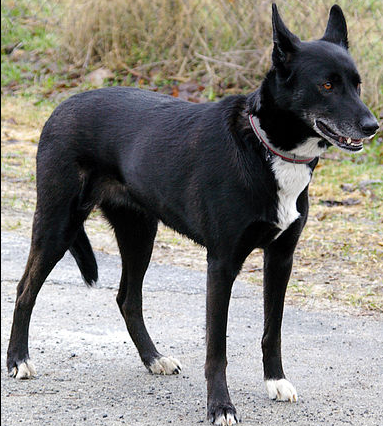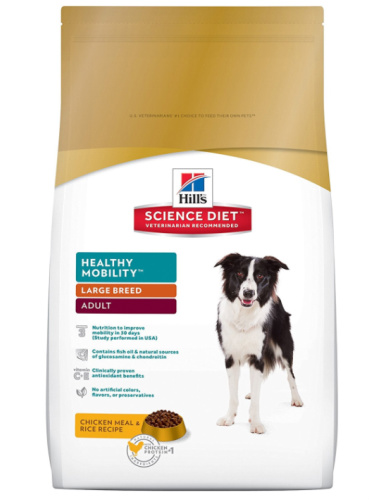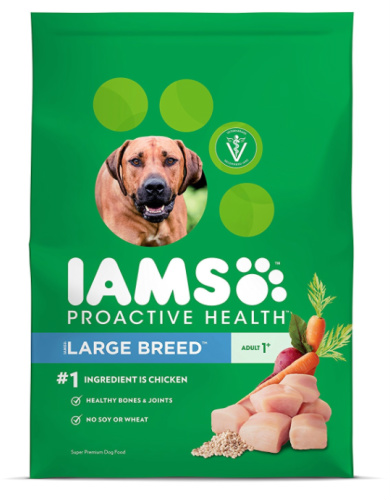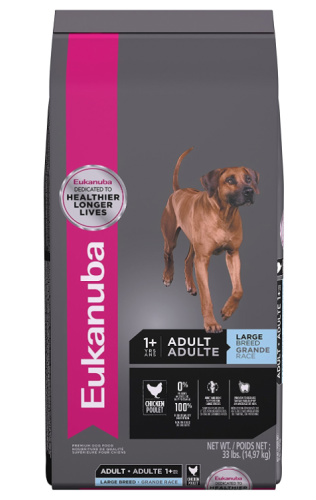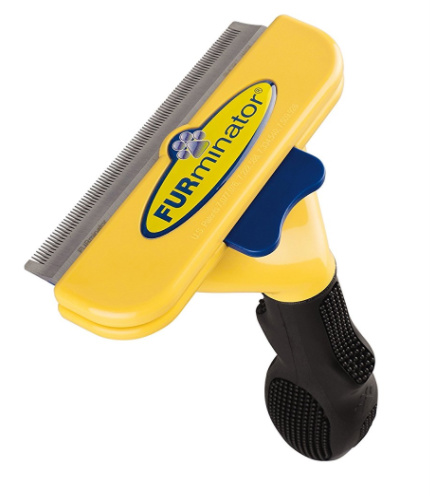Alaskan Husky Dog Breed Temperament Diet Training
Table Of Contents
- 1 1. Introduction to Alaskan Husky
- 2 2. What is an Alaskan Husky?
- 3 3. The History Of The Alaskan Husky
- 4 5. Alaskan Husky Temperament
- 5 6. Potty Training An Alaskan Husky Puppy
- 6 7. Famous Husky Stories
- 7 8. Choosing an Alaskan Husky puppy
- 8 9. Fun Facts About Alaskan Huskies
- 9 10. The Best Food for the Alaskan Husky
- 10 11. Alaskan Husky Health
- 11 12. Breeding an Alaskan Husky Puppies
- 12 13. Grooming an Alaskan Husky
- 13 14. Obedience Training for Alaskan Huskies
- 14 15. Managing hyperactive Alaskan Husky Behaviour
- 15 16. Games for your Alaskan Husky
1. Introduction to Alaskan Husky
If you ever need a companion to go bob-sledding with, the Alaskan Husky is ready for you. This resilient sled-dog has the strength to haul all your groceries and more. It is the official mascot of Alaska.
If you have a preference for large breeds, you’ll want to know about this fellow. Here’s all the information you need to care for it.
2. What is an Alaskan Husky?
You’ll be surprised to know that the Alaskan Husky isn’t a purebred dog. This hefty giant is a cross between the Alaskan Malamute and the Siberian Husky.
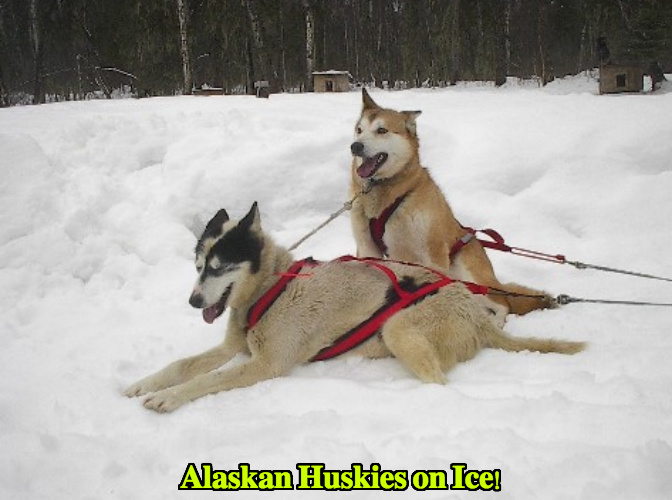
As such, it hasn’t received acknowledgment as a pure breed. However, breeders are clear about its purpose; they bred it to pull heavy loads through snow-filled roads.
The Alaskan Husky is the dog of choice for dog-sled racing. Malamutes and Siberian Huskies can’t match its speed. It often wins sprint races. Huskies that win these races consistently are extremely valuable. Non-competitive Alaskans often serve as working sled dogs.
3. The History Of The Alaskan Husky
a. The Alaskan’s Heritage
The Alaskan Husky’s history begins with the arrival of Europeans and Russians in North America. These first Alaskans were, and still are, hardy folk who relied on dogs for different purposes. They wanted a dog breed that could help them perform their tasks efficiently. They turned to the native dogs in the region.
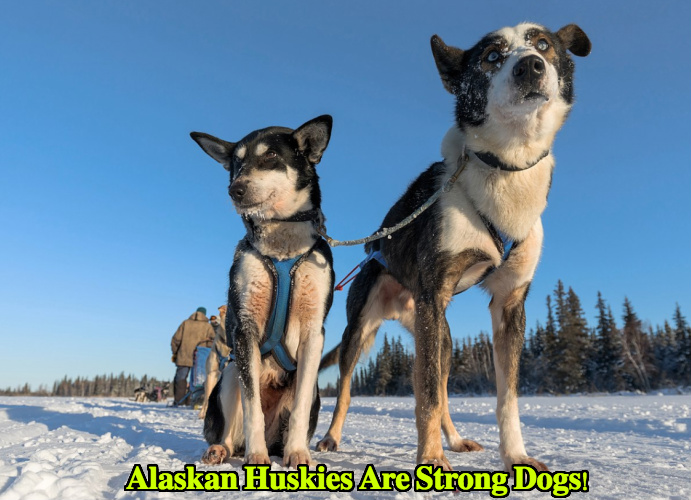
Indigenous dogs were plenty at this time, and these came in various sizes. The Tai Ten Bear Dogs were tiny enough to hide in a person’s coat. Then, there were heftier Village Dogs. They were crucial for completing tasks, including hunting and trekking.
The Columbian Native Dogs of North America and Coastal Eskimo Dogs, in particular, contributed to the evolution of this crossbreed. Eskimo dogs were resilient and had the qualities these settlers were after. They were robust, hefty, and could do without food or water.
These creatures had big heads, curled tails, and thick, fur coats. These fantastic dogs were capable of incredible physical feats.
Miners and gold seekers began to breed these dogs because they wanted animal helpers that could haul supplies.
These settlers experimented with other large, interior dogs such as the Siberian Husky, Hounds, and Pointers. These dogs were quick on their feet and were an asset in dog races. Hence, we have the Alaskan Husky, which has a smattering of their qualities. These lively creatures are always ready for work and lunge straight into their harnesses.
A 2015 study indicated that the Alaskan Husky shares a genetic relationship with the Siberian Husky and the Alaskan Malamute. These are. In turn, closely related to Chukuoka Sled Dogs. Eskimo Dogs, and Greenland dogs.
In short, the Alaskan Husky is a lovely mix of all dogs native to Alaska but shares direct relations with the Siber and Malamute.
b. More About Its Parents – The Siberian Husky
The Alaskan’s first parent, the Siberian Husky, is a working dog from Siberia, Russia. It is a Spitz-like dog that has an instantly recognizable double coat.
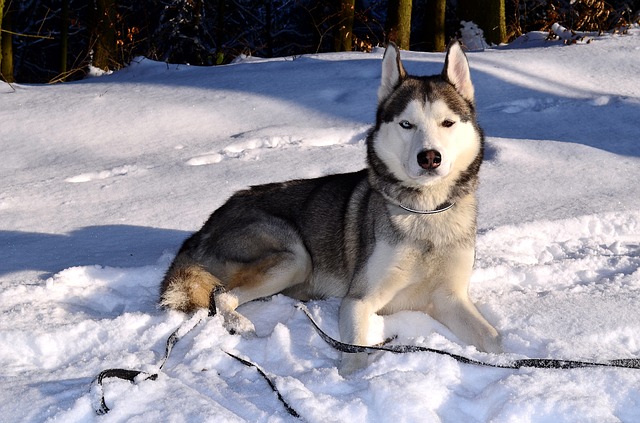
The Chukchi people of the Chukchi Peninsula were the first to develop the Siberian Husky. A Russian fur trader, William Goosak, introduced the dog in Nome, Alaska, during the Nome Gold Rush. People used it as a sled dog. They gave it the nickname, Siberian Rat because it weighed only 40 lbs compared with the Alaskan Malamute, which weighed about 75 pounds.
A 2015 genetic study confirmed that the Alaskan Husky shares a close relationship with the Siberian Husky and the Alaskan Malamute. Several husky breeds, including the Sibe, have the Tamyr wolf in their lineage.
c. More About Its Parents- The Malamute
The Malamute is practically indistinguishable from the Siberian Husky, except that it’s much heftier. The Malemuit Inupiaq people of the Norton Sound region created it to haul heavy loads.
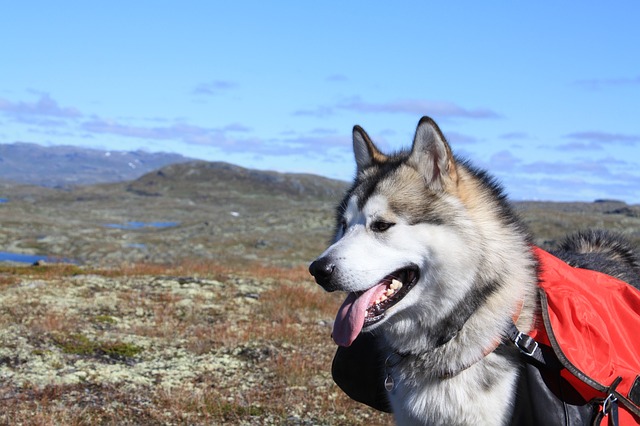
The Malamute is a basal dog breed that originated before modern dogs in the 19th century. Like the Siberian Husky and the Alaskan Husky, it has a genetic relationship with the Chukotka sled dogs from Siberia However; it is separate from the Canadian Eskimo dog and the Greenland dog.
4. Alaskan Husky Appearance
There isn’t a strict breed standard for the Alaskan Husky. Also, it’s a crossbreed. Hence, Alaskan Huskies can vary enormously in appearance.
Much like Siberian Huskies, male Alaskan huskies weigh between 40 to 60 lbs, while females weigh between 55 to 55 pounds. They are medium-sized, and many resemble small Siberian Huskies.
Their ears are wedged-shaped and erect. Like other spitz-type dogs, their muzzles are long, making them look like their Wolf ancestors. Their eyes can be blue or brown. They have dark noses and perky, fluffy tails. These physically powerful creatures have sturdy, muscular legs.
These dogs have to work hard in the cold, so they have short, dense double-coats. These can come in many color combinations. Most are red, white, brown, silver, gray, salt and pepper, or golden.
Since their coats are short, Alaskan Huskies have to work or race in belly protectors. They may even require dog booties to protect their paws from the cold or abrasions.
5. Alaskan Husky Temperament
The Alaskan Husky would take on the personality traits of its Siberian Husky and Alaskan Malamute parents. Both parents don’t differ much in temperament, so you’d expect the Alaskan Husky to behave like a typical sled dog.
And indeed, it is a bona fide sled dog. Both the Siberian Husky and the Alaskan Malamute are hardworking creatures. The Alaskan Husky shares the same work ethic. It loves nothing better than to haul bulky items and groceries for its owner.
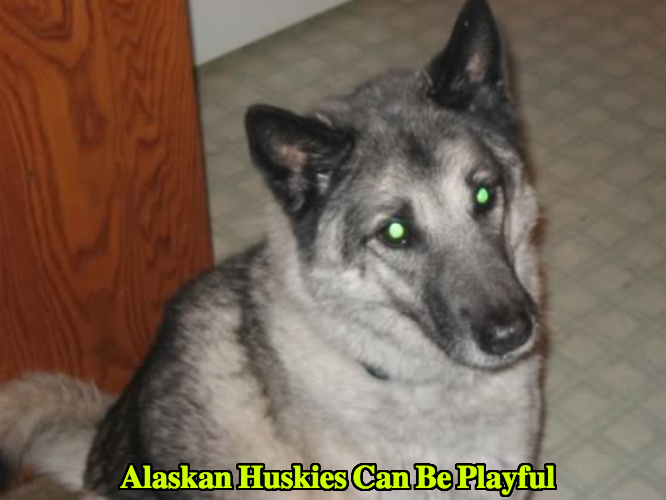
Like both parents, the Alaskan Husky is playful. Running is in its nature, so it needs vigorous exercise, especially when the weather turns cold. Remember to keep it leashed because it may take off otherwise.
This dog, like the Sibe and Malamute, needs physical and mental stimulation. Make time to play games with it. Agility exercises, hide and seek, and Kong toys are all suitable ways to keep it occupied. Without these activities, it can be very destructive.
Owners of Alaskan Malamutes have complained about their pets chewing through drywall and turning their lovely gardens into moon craters. If you have a lawn, you may consider giving your Alaskan Husky a sandbox where it can dig. You will also want to train it not to bark.
The Siberian Husky gets along with other pets but needs supervision lest it tries to turn them into dinner. The Malamute, too, thrives on the hunt. An irresistible prey drive may cause them to hunt smaller animals. Your Alaskan Husky may have the same predatory instincts. Do not keep it around rabbits, birds, or hamsters.
The Siberian Husky is sociable with pets, but the Malamute is less so. You’d have no problems with aggression if your Alaskan Husky takes after its Siberian parent. You’d have to keep your dog in check if it’s like it’s Malamute parent. Malamutes are infamous for being hostile towards other dogs of the same gender; they want to show dominance.
Both Sibes and Malamutes are excellent people dogs when socialized well. In fact, they can be too trusting and make poor watchdogs.
Siberian Huskies and Malamutes are outstanding doggie Houdinis. They will try to find some way to get out of yards. If you have an Alaskan Husky, keep it behind a fence lest it tries to escape.
Note that Sibes and Mals have wolfish instincts and respect pack order. It’s essential for you to establish yourself as an Alpha as soon as you take your Alaskan Husky home. Left unchecked, it can be stubborn and demanding.
Training the Siberian Husky or the Malamute is a challenge. These dogs are apt to use their own devices to get tasks done. Your Alaskan Husky may use its intelligence in ways that you may not expect. Never underestimate it.
In all, the Alaskan Husky is for you if you like a dog with a rugged, wolfish appearance. It’s also ideal for you and your family if you are outdoor lovers. Its imposing looks deter intruders, so it will keep you safe. That said, rest assured that this fellow is friendly with everyone.
6. Potty Training An Alaskan Husky Puppy
Many owners give up their dogs because they are frustrated with unsuccessful potty training. They find clearing up after their pet’s messes too tiring.
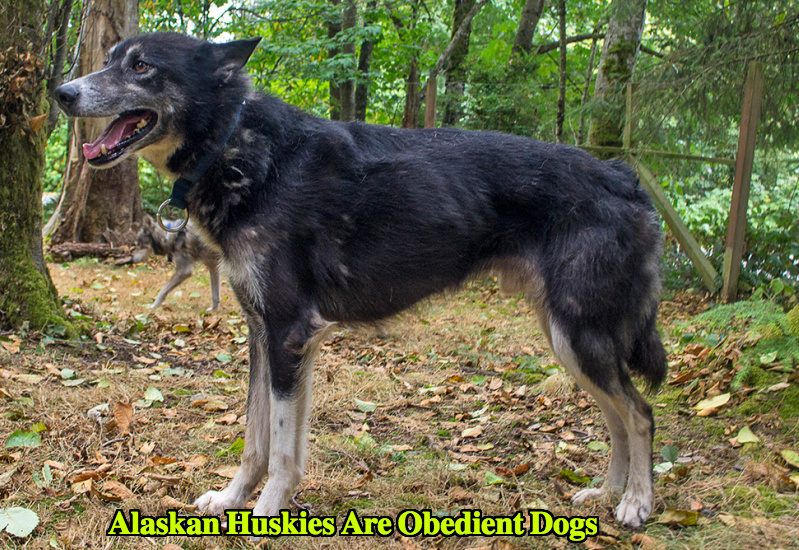
Huskies, in particular, can be a handful to potty train. The trick is to go about it the right way. The steps for effective housebreaking are the same for every dog, but some of them work better for the Alaskan Husky than others.
a. Not everything will work for your Alaskan Husky
First of all, remember that the Alaskan Husky is an outdoor dog. As such, rely more on outdoor than indoor training.
It can be a challenge to get your Alaskan Husky to tell the difference between a potty training pad and your carpet. Hence, you may want it to pee and poop outside straight away.
b. Create a training schedule
Puppies usually pee and poop right after they eat, before they sleep, and after they rise. Find out what your puppy’s schedule is. Most of them pee and poop 20 minutes after eating. Stay alert and take your puppy outside during these times. Remember that the longest you can expect your puppy to hold its bladder is 3 hours.
c. Create a feeding schedule
Feed it when it’s convenient since you know that it needs to go 15 minutes after it eats. The more consistent schedule, the easier it is for you to tell when your puppy needs to go.
d. Elimination area
When indoors, decide where you want your puppy to relieve itself. Set up a playpen in that area and lay newspaper in it. Remove some of the paper as your puppy becomes used to it. It should be using that area consistently.
When training your Alaskan Husky outside, let it relieve itself in the same spot all the time. Its scent should remain in that area and remind it that it should ease itself there.
e. Crate training
Crates are controversial. Some people find them restrictive and inhumane. However. They are an excellent way to protect your pet when it travels with you. They also teach puppies timing and self-control.
First, a crate should be comfortable. Your pet should be able to turn around, sit and lie down in it. To encourage your pet to use it, put a treat in it. Your pet will feel that it’s safe and go in on its own. Always leave the gate to it open.
f. Potty training Bells
These are an excellent way to remind your Alaskan Husky that it’s potty time. Get your pet to hit it with its paws when it’s time to go. Hang it over your dog door if you have one. If not, just hang them over your crate door. Your puppy will get used to it gradually.
7. Famous Husky Stories
a. Balto and Togo
These two resilient Alaskan Huskies were there when it counted most. They played a part in saving the people of Nome, one of Alaska’s most important towns.
It was 1925, and the people of Nome faced a building Diptheria epidemic. Of course, drones hadn’t evolved then, Alaska faced a thunderous winter storm, and the only way to get medicine to the people was with the help of trusty sled dogs. The Alaskan authorities assembled a relay team.
Balto and Togo rose to the occasion. Togo traveled across the most dangerous part of the trek. It was deathly cold; the wind had dropped to minus 85 degrees Fahrenheit. Togo and its leader, Leonard Seppala, braved the conditions. Visibility was nearly zero.
Gunnar Kaasen and his partner, Husky Balto, were supposed to hand the serum to Ed Rohn and his team of dogs, who were to transport it to Nome. Miscommunication led Kaasen to take it all the way to the town. Of course, Nome gave them a hero’s welcome.
The other teams felt shortchanged, and held ceremonies of their own. After all, everyone had traveled over 674 miles. They felt that Balto wasn’t the only dog which deserved honors. They excluded Kassen and Balto from these events.
b. A Responsive Alaskan Husky – Mishka
Youtube has given modern Huskies a name. It has shot Mishka, a famous talking Husky, to fame. Though she doesn’t speak, she provides fascinating responses to her owner’s comments. She’s particularly renowned for saying something that sounds like “I Love You.”.
8. Choosing an Alaskan Husky puppy
A pet is a lifetime commitment. Furthermore, Alaskan Huskies are a challenge to own. An Alaskan Husky is a joy if you put some effort into choosing the right one. Here’s how to go about doing this.
a. Understanding the breed
First, the Alaskan Husky is a hybrid. As such, you won’t be able to predict the appearance or temperament of the puppy. How it behaves or looks will depend on whether it takes after the Siberian Husky or the Malamute.
An Alaskan Husky puppy may have blue eyes if it takes after its Siberian parent. If it resembles its Malamute parent, it may be brown-eyed. It will tend to be smaller-sized if it’s like the Siberian Husky.
b. Get your puppy from a responsible breeder
Puppies from pet stores usually come from puppy mills. These mills typically wean puppies early so that they can ship them off to pet stores quickly. Hence, they don’t get the chance to interact with their littermates and are apt to become fearful or aggressive.
Get your Alaskan Husky from a responsible breeder instead. He or she should allow you to meet the puppies and their parents. The breeder should also have the puppy’s vaccination papers on hand.
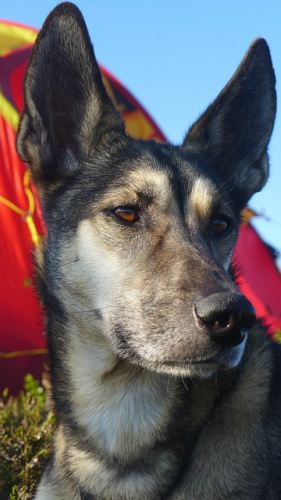
c. Don’t buy puppies from the first litter
Don’t buy puppies if they come from the female’s first litter. It’s usually difficult to tell if they have preexisting health conditions. Also, they may have inherited undesirable personality traits.
d. Meet the puppy’s parents
It’s crucial to meet the puppy’s parents. Observe them for temperament or health issues. Their litter may have inherited these from them.
e. Interact with the puppies
Meet the puppies and observe how they interact with one another. Dominant puppies would want to feed first. Note that dominance is an issue with Alaskan Huskies; their Malamute parent may be aggressive toward other animals.
Then, observe the puppy you’re interested in without the litter present. Carry and cradle it. Give it a belly rub. The more responsive it is to handling, the better.
f. Choose a puppy that suits your personality
Like humans, puppies have different character traits. Some puppies are dominant bullies which steal food and toys from their littermates. Some are rebels which love doing as they please. Some are independent and prefer being on their own.
There are eager-to-please pups that are too willing to do as you ask. They will need firm direction. Others are timid and seed socialization before they can interact with others.
Let the puppy mouth you and notice how it reacts. If it is concerned, it will probably be a responsive, obedient pet.
g. Check the puppy’s health
Check the puppy that you’re interested in for health concerns. Examine its ears, eyes, teeth, nose, and rear. They should have bright gums and thick, coats.
Clap your hands to see if the puppy responds; this will tell you that it has good hearing. Roll a ball to it and see if it reacts. It has good eyesight if it does. Also, check if it runs and walks well.
9. Fun Facts About Alaskan Huskies
Alaskan Huskies, like their Siberian parents, have a smart, wolfish appearance. Here are a few fun facts about them that you’ll want to know.
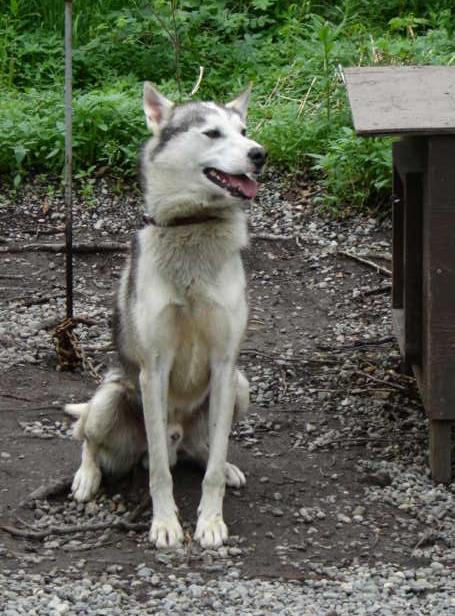
a. Huskies are born runners
First, the semi-nomadic Chukchi people had to enlarge their hunting grounds roughly 3000 years ago. So, they tried to breed the perfect sled dog.
The ideal sled dog had to have resilience, be able to tolerate the cold and survive on little food. Alaskan Huskies fit the bill, although they aren’t as close to Chukchi dogs as their Siberian parents are. That said, they can run just as their parents can.
b. These dogs have impressive skills
Huskies first appeared in the All Alaska Sweepstakes Race in 1909. Rumor spread that they were ideal sled dogs. It wasn’t just gossip because these creatures dominated the sled racing competitions in Alaska for the next ten years.
c. Nature built them to survive the cold.
Huskies have thick, insulating double coats. While their undercoats are short and warm, their overcoats are warm and resist water. Their almond-shaped eyes make it easy for them to squint to block out snow.
They also have thick tails that they use to cover their eyes when they sleep. Their hot breaths warm their tails and protect their faces from the cold.
d. Huskies are poor watchdogs
Huskies are friendly giants. Large as they are, they aren’t suspicious of strangers. They are too charming to deter intruders, though their features are intimidating.
e. Huskies don’t tire easily
These dogs can run for long hours without much food. Humans use glycogen and fat when they run, which exhausts them. Huskies don’t wear themselves out because they have an efficient way of regulating their metabolism.
f. Supervise your Alaskan Husky closely
Alaskan Husky puppies are free spirits which love exploring. They are intelligent creatures which are capable of traversing fences and slipping out of leashes. It’s essential that you supervise them closely.
g. The Alaskan Husky’s ancestors were army dogs
Another testament to the strength and agility of the Alaskan Husky is that its ancestors, the Sibes, were reliable army dogs during WWII. They served as rescue and transport dogs.
h. Huskies are related to wolves
Several dogs share the same genus as the wolf – the Chow Chow, the Shiba Inu and surprising.y, the Shih Tzu. The Alaskan Husky and its parents, the Sibe and Malamute, are closely related to wolves as well. Huskies, though, are domesticated animals.
i. Huskies have blue eyes
You’ll seldom find dogs which boast lovely blue eyes. The Alaskan Husky has Sibe parentage, so its eyes may be of this color. It’s because of the merle gene, which decreases pigmentation. Huskies, however, can have bright eyes even if they don’t have this gene.
j. Huskies are loud
The Husky has a loud voice. Yes, the howls of Alaskan Huskies, Siberian Huskies, and Alaskan Malamutes resonate as far as ten miles away. They say a lot too – Husky owners will share that their pets are particularly chatty.
10. The Best Food for the Alaskan Husky
Food makes a world of difference to your Alaskan’s well-being. Hence, you should know about its eating habits, and how often you should feed it.
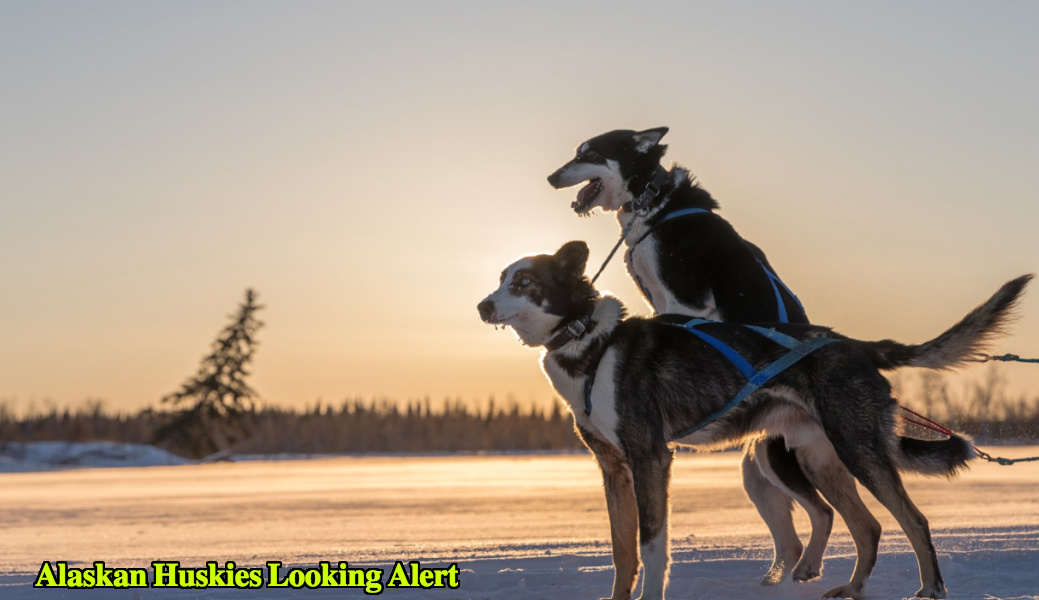
You probably got a Husky to help you with chores around the home, e.g., hauling groceries or bulky items, so you won’t want it to be underweight. We answer some frequently asked questions about how to get your picky Husky to eat and suggest some suitable dog foods for it as well.
a. What are a Husky’s eating habits?
Huskies usually eat after a healthy workout. Though this means that they’d burn off calories quickly, overeating is possible. They may put on hard-to-lose pounds. Overeating makes them prone to obesity and heart-related problems.
Also, an Alaskan Husky may be as stubborn as its parents. Small changes in taste or flavor may put them off their food entirely. Note that they can be quite particular about what they eat. If they experience illness after eating a specific food, they may not want to eat it again.
Try not to leave food out for too long, or your pet may become bored with it. If it refuses to eat and shows no sign of illness, keep the food and leave it out again when you know that it will be hungry.
b. How often should I feed my Alaskan Husky?
Huskies are grazers, so it’s advisable to leave a food bowl out for them throughout the day.
To avert boredom, divide their meals into equal servings. They will have a source of calories that they can burn throughout the day without having to use their store of fat. They won’t lose unnecessary weight.
c. How much food should I give my dog?
Feeding the right amount of food to your pet will prevent it from becoming overweight. Remember that Huskies don’t each as much as other large dog breeds. Your Husky will rely on small amounts of food, so be careful not to overfeed it.
To decide how much to feed it, consider its weight and energy levels. Adjust the amount of dog food according to its needs.
d. What to do if I have an underweight dog
Your dog may become underweight after a period of illness. If your pet has lost a lot of weight, there are some steps you can take to get it healthy again. Feel through its fur, especially along its sides. If you can feel its ribs, it’s underweight. Choose a top-quality food and mix it in with what it already eats. The mixture should have the essential vitamins and minerals it needs to increase its weight.
Furthermore, you can give it treats like boiled eggs, cooked chicken, and raw carrots.
Huskies have a lot of energy and need a lot of protein. You would find these in whole meat ( e.g., chicken, lean beef), but not in manufactured products. A Husky’s diet needs to have at least 40 to 50% protein.
Dogs need some fat in their diet as it helps them produce the hormones that develop the immune system. It also strengthens the tissues, nerves, and cells that reduce inflammation. Healthy sources of Omega-3 fatty acids include poultry, salmon, flaxseed, and sunflower oils.
Like humans, dogs need vitamins and minerals. These provide antioxidants that promote shiny coats. Huskies tend to have corneal problems; vitamins help to defend the cornea. Eggs and milk have calcium for healthy bones and teeth.
e. The 4 Best Foods for Alaskan Huskies
Here are some of the foods that satisfy these requirements.
i. Hills Science Diet Chicken Meal
If your Alaskan Husky weighs over 55 pounds, this is the right dog food for it. It’s perfect if your dog is underweight.
Hills contains Omega-3 fatty acids from fish oil that will keep your Husky’s coat gleaming. It offers balanced nutrition and has essential minerals (Glucosamine and Chondroitin) to protect an active Husky’s joints. It also has high-quality protein to maintain muscle growth. There are no artificial colors, flavors or preservatives in this product.
A customer has said that it has helped her older dog to start eating again. It has also helped some pets with their mobility.
This highly-rated dog food has chicken as its primary protein source. The fact that veterinarians endorse it is a testament to its quality. The protein helps your Alaskan husky’s muscle development.
Give this to your Alaskan Husky if it runs a lot. It has Glucosamine and Chondroitin to protect its joints. It is the ideal food for an older Husky which has osteoarthritis.
If your pet has problems with eating and digestion, this perfect blend of fiber and prebiotics will help. Reviews show that it has improved pets’ digestive issues. It has also helped pets gain healthy weight.
iii. Eukanuba Adult Dry Dog Food
Eukanuba has been prominent in the pet food industry for decades, and it continues to produce quality dog products. This one has chicken as it’s primary protein source and is ideal for your active husky.
Furthermore, it has a unique fiber system that enables quick digestion. Prebiotic FOS increases nutrient levels and prompts your pet to eat healthily.
Eukanuba is excellent for senior Huskies with joint issues because it contains Chondroitin and Glucosamine. Omega-3 acids promote a glossy, healthy coat.
Because they come in small bites, customers didn’t have problems feeding their aging pets. The extra vitamins and minerals it contains are a plus.
11. Alaskan Husky Health
Alaskan Huskies are a healthy breed because their Sibe parents are. The Siberian Husky Club of America has been advocating the breeding of dogs without defects, so it stands to reason that Alaskan Huskies would benefit from this.
That said, all Huskies have a few health concerns. Here are a few of them.
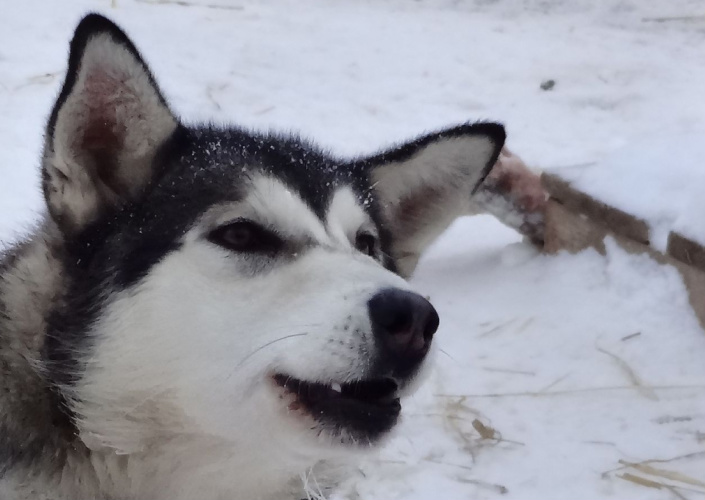
a. Hip Dysplasia
Hip Dysplasia happens when the femur, or thigh bone, doesn’t fit well into the pelvic joints. It’s one of the top concerns of Huskies and 114 other dog breeds. The condition is hereditary and ranges in severity. Veterinarians diagnose it with radiography and treat it with surgery.
b. Progressive Retinal Atrophy (PRA)
PRA affects many dog breeds as well and is prevalent in Huskies. It refers to the degeneration of the Retina. Of course, this decreases the dog’s vision and eventually blinds it.
Huskies inherit it through a faulty X Chromosome. There is no treatment for it at present. They may experience night blindness by the age of four, and their vision continues to degenerate.
c. Juvenile Cataracts
Cataracts happen because of opacities around the lens of the eye. A biochemical balance keeps it clear. When there is an imbalance of chemicals, opacities start to form. They can impair vision, sometimes severely.
These opacities are hereditary. You may think of them as being present in older dogs, but puppies may develop them as well. They don’t occur too often and are congenital. Huskies are predisposed to the condition.
Cataracts form quite quickly in puppies. It usually intensifies If your puppy has a cataract, it may stumble. Also, you may see a white film develop around the pupil.
d. Corneal Dystrophy
Corneal Dystrophies are a group of eye disorders that are progressive, and genetic. They happen when genetic material accumulates in the outer layer of the eye. While they may not be symptomatic in some Alaskan Huskies, but cause severe vision impairment in others.
Most cases of dystrophy affect both eyes. They form gradually and tend to run in families. Some are dominant, while others are recessive.
e. Uvedermatologic Syndrome
This condition is a complex one which affects the eyes, nervous system, and skin. It is autoimmune and destroys the melanocytes (cells that make pigments). The destruction causes the premature whitening of hair.
Huskies that suffer from this condition will also have eye problems. If your pet has painful, red eyes, have a veterinarian check them immediately. The disease causes irreversible blindness.
12. Breeding an Alaskan Husky Puppies
Alaskan Husky dogs, like their parents, are renowned for their rigor, loyalty, and diligence. They are also incredibly bright creatures.
Since you would want all these qualities in your husky puppy, you would have to find healthy Sibes and Malamutes to breed. It is a considerable undertaking that comes with significant responsibilities.
Everything said, how would you breed Ben Alaskan Husky litter?
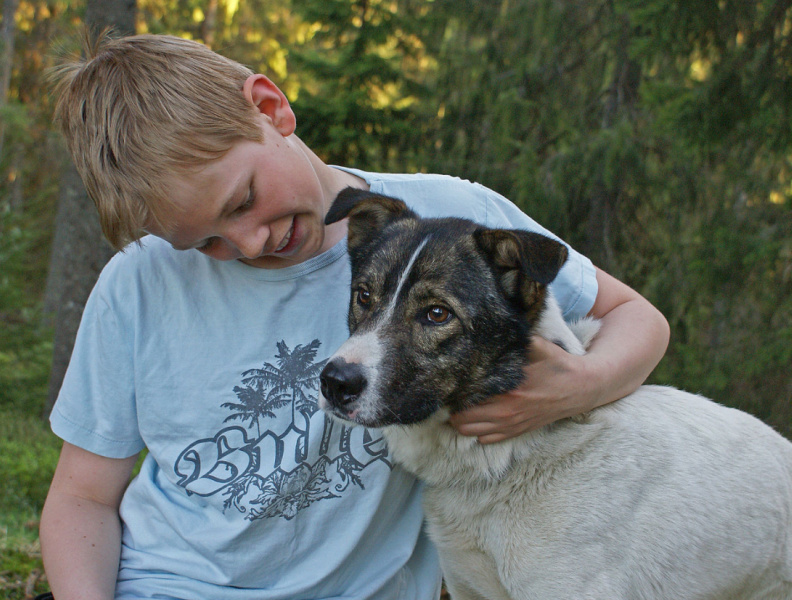
a. Choose suitable Huskies
To breed Alaskan Husky puppies, you would need to choose a healthy Siberian Husky male and an Alaskan Malamute female. It always best if the Malamute is the female because she would be heftier and be able to carry the litter.
Ensure that both the male and female don’t have genetic or behavioral issues, as the litter may inherit them. Both parents should have calm and nurturing temperaments. If they are aggressive, the puppies might be too.
b. Don’t breed the female too early
A female Malamute would take a longer time than a Chihuahua to mature. Female huskies aren’t ready to breed until they are at least two years old. Males can procreate at about six months.
c. Make sure that both dogs have registration papers
Ideally, both dogs should have Kennel Club registrations. Go through their bloodlines to find out if they have health concerns.
d. Have a veterinarian give them physicals
Get your veterinarian to check the parents for health problems about a month before breeding takes place. Look for evidence of hip dysplasia and obesity.
e. Know when the female is in heat.
The female will not accept the male during the proestrus part of her heat cycle, although she has a swollen vulva and is bleeding. She will do so during the estrus when she starts to flirt with the male.
Note that you should keep her away from other male dogs as she may become pregnant with their puppies instead.
f. Take the female to the vet when she shows signs of being pregnant
If your female gains weight and has a bigger appetite than before, she’s probably pregnant. Have your veterinarian confirm her pregnancy.
13. Grooming an Alaskan Husky
Husky ownership entails knowing how to groom its short, yet dense coat. Huskies, including the Alaskan Husky, aren’t hard to groom. However, their coats need regular brushing, detangling, and maintenance.
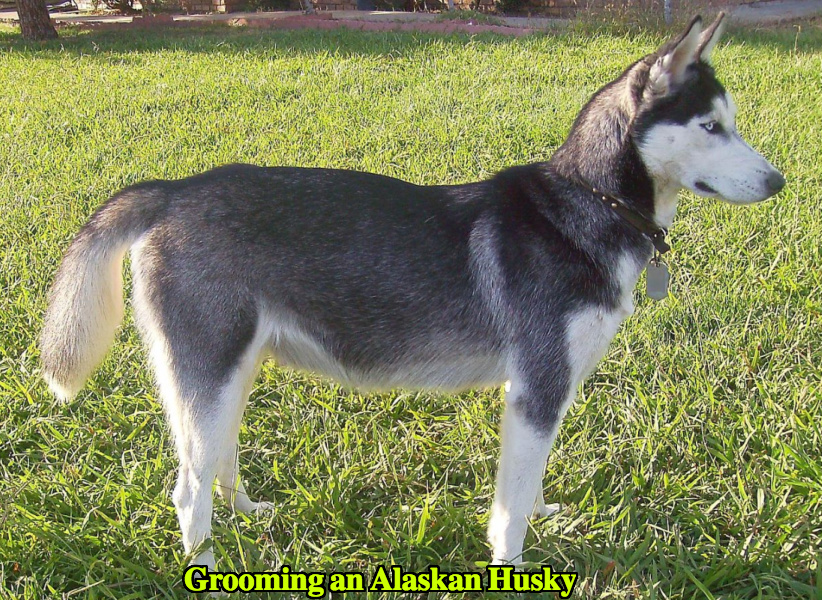
a. Understanding the Husky coat
Huskies have a double coat. The fine undercoat insulates them and keeps them warm, while the longer overcoat keeps away moisture. Regular brushing is necessary to remove mats and tangles.
Puppies usually have a fuzzy undercoat that they will shed when they are about ten months old. A full, adult coat will replace it.
Huskies shed their undercoats when it is warm. They do so slowly, and their undercoats can last for about six months. Lint rollers are a wise investment.
b. Don’t Clip Or Shave Your Alaskan Husky
Snowdog breeds don’t need clipping or shaving. You may feel tempted to clip your dog’s hair when the weather is warm, believing that doing so will help it stay cool.
However, this doesn’t work. Your Alaskan Husky has guard hairs that create air pockets to protect it from UV rays. Your pet may develop skin problems, and its topcoat will regrow in patches.
c. Brushing your Alaskan Husky
Your Alaskan won’t require much brushing, but you may need to rake out loose fur. Because it doesn’t have an excessive, oily coat, they don’t have a doggy odor, Regular bathing is necessary.
Alaskan Huskies only need short, weekly brushing sessions during the non-shedding season. It encourages the skin to produce natural oils. Keep your pet on a proper diet rich in Omega-3 fatty acids.
i. Undercoat Rake
An undercoat rake is one with long teeth set wide apart. It moves past the guard hairs to remove the undercoat.
To get rid of tangled undercoat hairs, start raking, with some strokes going in the direction of the hair growth and others the opposite way. Continue until there are no undercoat hairs.
Some people dislike using a Furminator because it damages guard hairs, but this is untrue. It works as long as you use the right Furminator.
Some Furminators include stripping and shedding blades. You shouldn’t use these if your Husky’s coat is dense. They can’t reach beyond the guard hairs. Manufacturers designed them for short coated dogs.
This Furminator Deshedding Tool has a stainless steel deshedding edge which reaches past the guard hairs to get rid of the undercoat. The handle’s ergonomic and gives you a firm, yet comfortable grip. It gets fid of hair without destroying the coat. It suits large dogs.
Customers who have dogs with dense coats have found it incredibly useful. It reaches past guard hairs easily. Owners have revealed that it’s useful for dogs that shed heavily.
This tool doesn’t make your pet feel uncomfortable. In fact, your Alaskan Husky will feel as though you’re giving it a belly rub.
d. Bathing An Alaskan Husky
Huskies don’t have an oily coat, so they don’t usually have a doggy odor. It requires only occasional bathing. Don’t bathe you’re Alaskan too often as its hair may become dry. Do so only when it becomes muddy.
Always brush your dog before bathing it. You cannot get rid of its undercoat hairs otherwise. Also, a matted undercoat doesn’t dry thoroughly. Your pet may get skin rashes.
14. Obedience Training for Alaskan Huskies
Huskies can be a challenge to train, Besides being large, they can be somewhat wilful. You’d have to bear a few pointers in mind when teaching your Alaskan Husky.
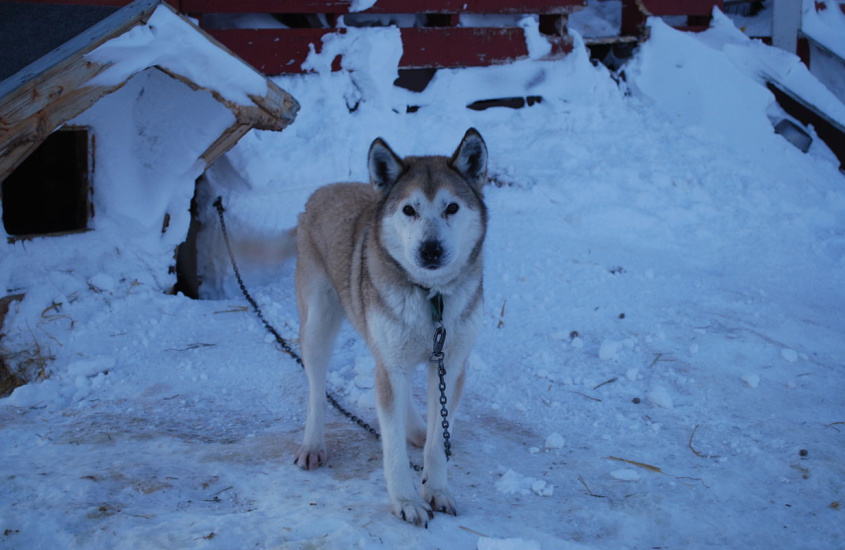
a. Leash training
Alaskan Huskies are hefty. Ensure that your dog is calm before you take it out for a walk, especially if you have issues pulling it on a leash. It will be more likely to respond to you when he is in this state.
Sit it beside you if you have issues. It will understand that the walk can’t go on until it stops the tugging.
b. The Alpha Position
Dog experts like Ceasar Millan advocate that you must be calm and assertive around dogs, as this is especially relevant to Huskies.
Take the ‘Alpha Position.’ It allows you to come across as a reliable leader who can provide food and safety. Once your pet understands this, it will be responsive to your commands.
c. Obedience training
Huskies are independent thinkers, and it’s wise to put them through sessions with a professional trainer. But training must be consistent. It’s essential that you reinforce the commands your pet learns at obedience school.
i. The ‘Sit” Command
This command is the first that all dogs should learn. To get your pet in sitting position, get a treat and hold it in front of your pet’s nose. Move it up. Doing this will cause your dog to want to follow the goodie. Its bottom will lower. Give it the treat once it’s in this position.
ii. The ‘Come’ Command
This command can be a lifesaver. You may need to get your dog’s attention in dangerous situations and call it to you.
Leash your dog. Get down to its level and give the ‘come’ command. Pull gently on its leash at the same time. Reward it when it comes to you.
iii. Down
This command is particularly tricky for an Alaskan Husky to learn because it involves submission.
Before you teach it, make sure that you are relaxed. Get a delicious treat and grasp it with your closed fist.
Hold it up to your pet’s nose. Your pet will sniff it. Move your hand down to the floor. Slide it along the ground and encourage its body to follow its head.
It will be in the down position. At this point, say “Down” and give it the treat.
iv. Stay
Again, this command will keep your pet in place when things get dangerous. It should have learned how to sit.
Get your pet to sit. Raise your palm and say ‘stay.’ Then, take a few steps backward. Reward your pet if it doesn’t follow you. It will understand that there is a reward only if it stays in place.
15. Managing hyperactive Alaskan Husky Behaviour
Alaskan Huskies make excellent pets. However, they should never be left alone for too long. They are apt to become reactive to some triggers( e.g., the postman, other large-sized pets).
Controlling your Alaskan Husky’s reactions is essential. Your Alaskan Husky may be hyperactive and prone to behaviors like chewing and howling, mainly when it’s boring. Here’s how to keep a highly-strung Husky in check.
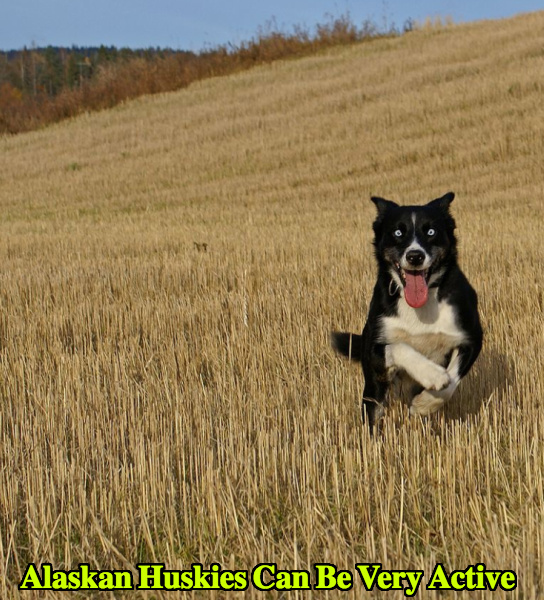
a. Take measures to control mischievous behaviors
First, you can take steps to limit your pet’s annoying behaviors.
Huskies are wolf-like and tend to howl. Teach your Alaskan Husky the ‘No Speak’ command. When it makes a noise, say ‘No Speak” firmly and close its muzzle gently. Reward your pet when it’s quiet.
Huskies also love chewing on slippers or even through drywall. To stop this behavior, give your pet a chew toy when you spot it. Keep doing this until it learns that it is supposed to bite into the toy and not anything else.
Huskies love to dig. After all, they are sled dogs that plow through thick snow. Restrict it to an area in your garden where you don’t mind a bit of a mess, and give it a sandbox where it can dig.
b. Give it chances to burn its energy
Present it with chances to burn its energy. Obstacle courses and playing at dog parks are opportunities for it to let off a little steam. It won’t resort to digging, chewing, or howling to relieve its boredom.
c. Teach your Alaskan Husky that being calm gets it the attention it wants.
Ignore your pet when it whines, paws at you or pulls at the leash. Stay quiet no matter what it does. When it learns that it can’t get to you, it will lie down. It will discover that it should show quiet behavior.
16. Games for your Alaskan Husky
Your Alaskan Husky is an energetic pet that needs mental and physical stimulation. These are some games that will keep it mentally and physically fit.
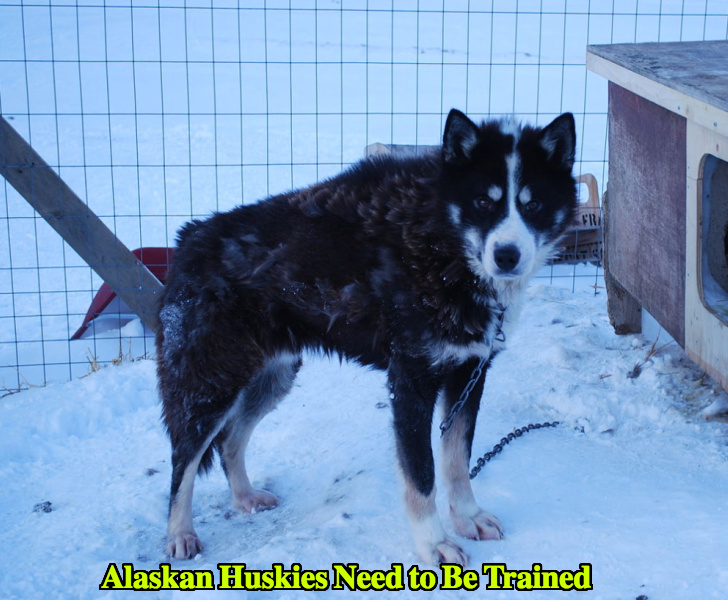
a. Fetch
This game is an excellent way for a rambunctious Husky to expend its energy. Whatever object you use, throw it as far as you can and encourage your pet to get it.
Say ‘Fetch’ as you throw it, and ‘Bring Back’ to remind it to return it to you.
‘Fetch’ is an aerobic exercise opportunity. It makes your pet responsive and teaches it to control its impulses.
b. Tug of War
Many trainers and owners dislike tug of war, fearing that it may promote aggression. It will not if played carefully and correctly.
Use suitable toys or soft rope. Don’t let it grab the toy unless you permit it. Your Alaskan Husky must let go of it when asked to do so.
c. An Outdoor Obstacle Course
You don’t have to take your pet far to let it enjoy an obstacle course. Create one with chairs, hula hoops and benches in your yard. Your pet will receive agility training and have a little fun as well.
d. Food Puzzles
Kong toys are straightforward, yet an excellent way for your pet to exercise its cognition. Besides alleviating boredom, it provides mental and physical stimulation.
In conclusion, a well-bred Alaskan Husky is a challenge to train, but a joy to own. It needs proper housebreaking, nutrition, and regular grooming to stay in tip-top shape. Obedience training and games will help to keep its energy in check.
